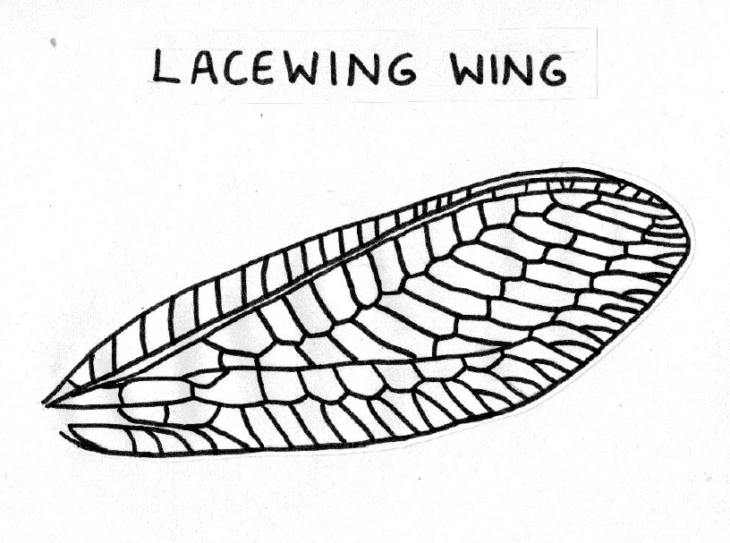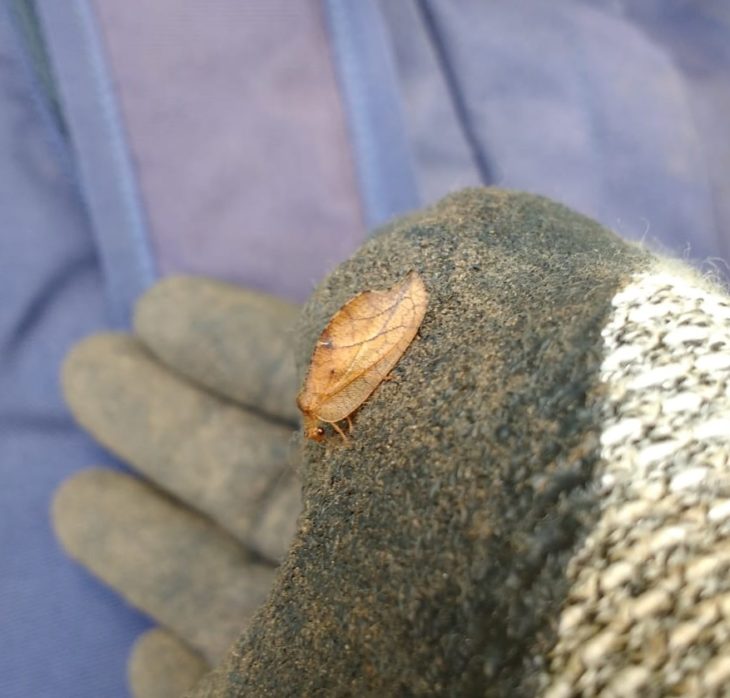Mysterious Lacewings
A while ago now Jenny and I spotted something fluttering just off the edge of the path while doing our bumblebee walk. Not being able to ID it we took a photo to show Ranger Laura.
This was the first lacewing I had every knowingly seen. So Laura sent the pair of us to a lacewings course run by Buglife find out more about them.
Lacewings are not the easiest things to ID down to species level. It takes a hand lense or a microscope to see some fiddly little veins on the wings. So I won’t get too much into that.
Lacewings belong to a supergroup called Neuroptera which means net-winged insects. This group also include a few similar looking species such as alderflies, scorpionflies and snakeflies.
The main groups of lacewings are antlions, wax-flies, green lacewings and brown lacewings.

This week Laura made an exciting discovery in the wildlife garden. She found a small brown insect with wings that resembled leaves. After an insect photo-shoot, we had enough images to work through to try and ID the lacewing. There are 30 different species of brown lacewing in the UK and only 23 of them are found in Scotland. So not too many to search through!
After a bit of searching, we found the perfect match a Drepanepteryx phalaenoides, which doesn’t seem to have a common name. This species was first identified in 1758. As far as we are aware there are currently only 8 known records of this species in Scotland, all hailing from the Clyde Valley region. This shows how under-recorded these insects are!

Thanks to our friends at Buglife we were able to ID this species quite quickly. If you find something similar and want to know if you have found a lacewing there are a few key features to look out for:
- Tent-like wings covering the body;
- Beautiful vein patterns on the wings (this is what they get their name from);
- They generally won’t be bigger than 3cm;
- Check it’s not a snipe fly or a caddis fly as they can be easily mistaken for lacewings.
It may take a while to check these but even recording that you have seen something you think is a lacewing and sending a picture with it on recording spreadsheets such as iRecord or iSpot make a huge difference to building up a picture of where our lacewings are. (Uploading a picture where possible is really great because someone else may be able to ID it from that)
Insects are often overlooked but they provide key ecosystem services such as decomposing and pollinating plants. The value of services that insects provide is hard to estimate but some scientists have come up with an estimate of $57 billion for the USA alone.
Knowing the distribution of insects is key to beginning to understand their lifecycle and developing a reference which could tell us for instance how changes in climate may affect them and ultimately have an impact on our lives.
So if you do see something it may be worth stopping for five minutes to take a look as you may have a brand new record for a species!
Cait McCauley, Falls of Clyde Assistant Ranger Intern
Help support our vital work and join us today!
Help protect Scotland’s wildlife
Our work to save Scotland’s wildlife is made possible thanks to the generosity of our members and supporters.
Join today from just £3 a month to help protect the species you love.
Preface
A while ago now Jenny and I spotted something fluttering just off the edge of the path while doing our bumblebee walk. Not being able to ID it we took …
